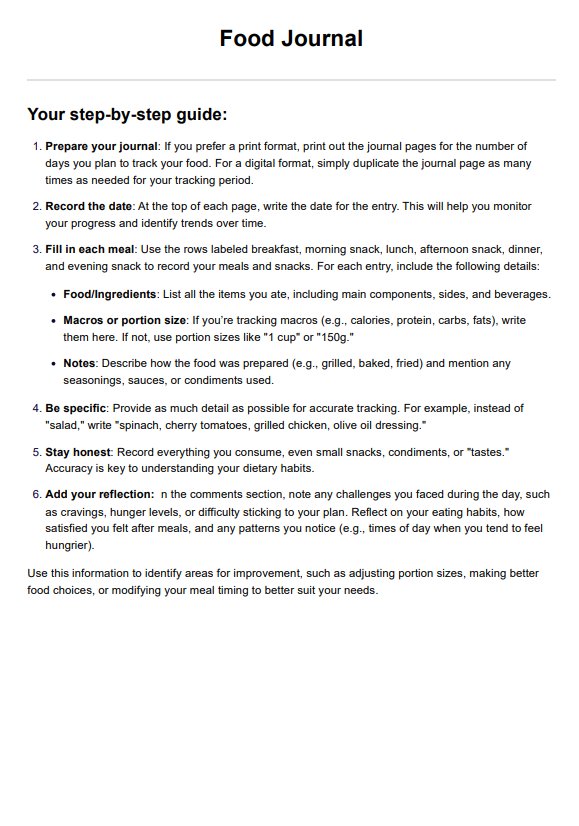A food diary or journal is a structured tool for tracking everything a client eats and drinks throughout the day, including meals, snacks, and beverages. For professionals, instructing clients to keep a food diary provides a detailed record of daily food consumption, helping assess nutrition information, identify eating patterns, and create tailored recommendations. It can help clients become more aware of their dietary habits and supports professionals in addressing specific goals, such as achieving a healthy weight or improving dietary balance.

Food Journal Template
Help clients understand their eating habits better by providing them with a Food Journal template. Get this resource for free!
Food Journal Template Template
Commonly asked questions
Food diary templates simplify the process of documenting meals and snacks, making it easier for professionals to track calories, analyze how much fat, carbs, and protein clients consume, and monitor food portions. For clients focused on weight loss, a weekly food diary can highlight patterns, such as overconsumption of certain foods or drinks, and guide adjustments to better align with weight loss goals. These templates also streamline the process for professionals to provide actionable feedback.
Yes, a daily food diary or journal is a valuable tool for professionals to help clients manage their diet effectively. By logging meals such as breakfast, lunch, and dinner, along with snacks and drinks, clients can gain insights into their calorie intake and nutritional balance.
EHR and practice management software
Get started for free
*No credit card required
Free
$0/usd
Unlimited clients
Telehealth
1GB of storage
Client portal text
Automated billing and online payments











